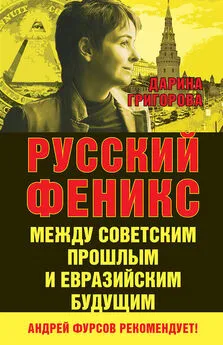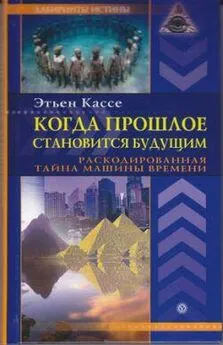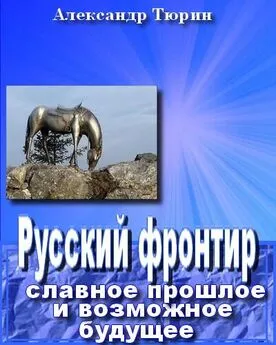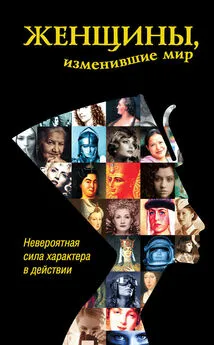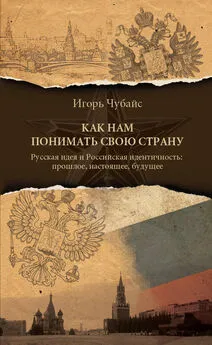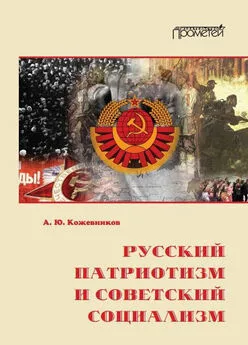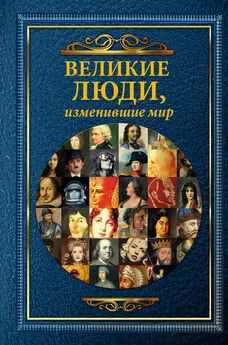Дарина Григорова - Русский Феникс. Между советским прошлым и евразийским будущим
- Название:Русский Феникс. Между советским прошлым и евразийским будущим
- Автор:
- Жанр:
- Издательство:Книжный мир
- Год:2018
- Город:Москва
- ISBN:978-5-6040153-9-1
- Рейтинг:
- Избранное:Добавить в избранное
-
Отзывы:
-
Ваша оценка:
Дарина Григорова - Русский Феникс. Между советским прошлым и евразийским будущим краткое содержание
Русский Феникс. Между советским прошлым и евразийским будущим - читать онлайн бесплатно ознакомительный отрывок
Интервал:
Закладка:
Zoe Knox. The Symphonic Ideal: The Moscow Patriarchate’s Post-Soviet Leadership. Europe-Asia Studies, Vol. 55, N 4 (lun., 2003), pp. 575–596.
Summary
Russian phoenix: two faces of post-soviet eagle (imperial-national dualism)
What is post-Soviet Russia? An empire, or a national state, or a specific Eurasian dualism — imperial-Russian? Should ‘imperial’ and ‘national’ on Russian soil be opposed or could they be combined and complemented as ‘Rossiyan’ with ‘Russian’?
This issue has been disputable throughout the last quarter of the existence of new Russia and was one of the reasons, which made me study the post-Soviet Russian period in terms of power-national identity relations. In Russia, regardless of the historical period, it is namely the incumbents that are responsible for everything happening in the state and that hypertrophy is natural for the huge Russian areas.
The other Russian sign of power is the sacralization of the state and its identification — to a certain extent — with the King, the Emperor, the Secretary General or the President of Russia. The personal factor and the irrational attitude towards the state (between the two extremes — worship and demonization) form a part of the Russian identity and of its capability to mobilize its resources in time of severe historical trials.
Our modern history allows the historian to be simultaneously a participant, a source and an observer, like Tukididis, as far as possible. It is true that the distance of time gives advantage to the purely academic historians that are not related to their heroes, like the people having dared to write modern history. I think, however, that historical knowledge can throw a light on the analysis of modern times, because however diverse the set of instruments of the representatives of different humanitarian sciences — social analysts, political scientists, anthropologists, philosophers, etc. — for the study of the contemporary environment could be, only the historian is capable to ‘see’ tendencies, which he has detected in past centuries. This is so, because there is a relation to the past. The fact that we do not perceive it does not make it non-existent but makes us attractively infantile having a different dioptre for short-sightedness. Yet, it also makes us vulnerable.
When I immersed into the Eurasian topic of the his-toriosophical heritage of the early Eurasians [422] Григорова, Д. Евразийството в Русия. София, 2008.
within the post-Bolshevik emigration, I found an explanation for the archetype of ‘Russian national identity’, namely, ‘phoenix-nation’, i.e. the Russian national education process will always be open, unfinished, integrating through the Russian culture, being European, and preserving the ethnic sovereignty of each people within Russia. It is a ‘phoenix’ because it is capable of recovering after historical cataclysms (1812, 1917, 1941–1945, 1991…) without elapsing into the track of European nationalism. Similarly to the Soviet-time Russian rail tracks that are broader than the European ones (a matter of national security), the ethno-nation-al (completed) type of identity within Russian territory is incompatible with the Russian areas. It is possible to develop only within limited territories and leads to disintegration.
It is not a mere chance that Zbigniew Brzezinski maintains the theory of opposing the ‘imperial’ to the ‘national’ in Russian context in relation to post-Soviet Russia as a former empire, which should become a national state. Brzezinski goes as far as defining the Russian aristocracy of the imperial period as Baltic, German, Polish and Georgian elite (‘That was elite!’), which ‘had never became authentically Russian regardless of the Russian piety [he refers to the Eastern Orthodox religion] and self-identification’. In his opinion, the absence of a Russian elite persists within USSR. Under the Bolsheviks, it were ‘foreigners that were in power’ although there were few Russians among them and Lenin was succeeded by a Georgian [423] Russia is going to a very difficult process of recovering it’s own national identity. Russia for a long time has an Empire but elite was mostly from the Baltic states and the Germany… from Poland, Georgia – that was elite! not authentically Russian even though Russia’s religiously and in terms of identity. Zbigniew Brzezinski on Russia and Ukraine, Center for Strategic and International Studies, CSIS, December 19, 2014. http://csis.org/ multimedia/zbigniew-brzezinski-russia-and-ukraine
.
If Stalin was only Georgian, former Georgian President Mikheil Saakashvili would not demolish his monument in the centre of Gori after the Colour Revolution of Roses. It is namely Stalin’s policy that was anti-Lenin and pro-Russian (in national rather than in ethnic terms) for revival of the Russian idea from the second half of the 1930s to the end of the war [424] Вдовин, А.И., Зорин В.Ю., Никонов, A.B. Русский народ в национальной политике XX век. М., 1998, 211–278.
. Brzezinski provides an interpretation in the spirit of ethnocentric nationalism, which could speculatively be applied to a high number of countries with marginal nationalities, including USA (it is as if someone would challenge the American-Polish dualism of Brzezinski himself). The curious thing in this case is the tendency that is imposed and not its academic precision.
Post-Soviet Russia is indeed faced with the task of solving the crisis of the national identity and emerging from the debate of‘saving the empire or construction of a national state’ [425] A policy of empire saving’ versus one of ‘nation-building’: Dunlop, John B. Rise of Russia and the Fall of the Soviet Empire. Princeton University Press, 1995, p. 287; Russia’s future as a liberal democratic country precludes her transformation into a Russian national state: Anatoly M. Khazanov. Ethnic Nationalism in the Russian Federation. Daedalus, Vol. 126, 3 (Summer, 1997), p. 139.
as of the beginning of the 1990s.
This was prompted by the disappearance of the ‘Soviet’ one in 1991. Actually, I am not sure of the ‘disappearance’ of the Soviet identity — not from the point of view of the live psychology of the so-called ‘sovki’ but because of the most important characteristic feature of the Soviet nation as a winner-nation after 9 May 1945. Until then, there were only Soviet citizens but not a national community.
The navel string between new Russia and USSR is not the geopolitical space including over 20 million Russians but the Victory Day, which so far has been the only holiday uniting all layers of the Russian society regardless of their political or other differences. It is namely for this reason that Russia’s geopolitical opponents propose a ‘mild’ version of depreciation of 9 May with the theory about identity between Nazism and Stalinism being imposed on a large scale (the ones that are still confined to the thinking of the Cold War period would also add Putinism).
The idea about the European Parliament decision as of 23 September 2008 to proclaim 23 August an European Day of Remembrance for Victims of Stalinism and Nazism came from the Baltic countries and Poland (the latter quite forgetting the fact that after the 1938 Munich Conference, with the approval of the European Great Powers, Hungary, along with Germany invaded Czechoslovakia. Likewise, Russia ‘does not remember’ 17 September 1939, as well as the fact that the war became Great Patriotic for USSR only after 22 June 1941). ‘The fight for people’s hearts’ and, sometimes, their minds is an invariable part of human history.
The effect of such comparisons is at first glance like the wrapping of public buildings by artist Christo: the thin cloth covers the stone building and, although it does not destroy it, it makes it invisible. You should remember it so as to wish to remove the curtain, whether word, pictorial or digital.
The author’s periodization, offered in this book, is from 8 December 1991 to 16 March 2014. The starting point of post-Soviet Russia, which I have accepted is eloquent — the Belovezha Accords, whereby Russia, Ukraine and Belarus denounced the agreement on the establishment of USSR (it is quite another issue whether the three republics had a legitimate power to determine the fate of the federation but the fact is irreversible).
In order to determine an end date, if it is not just a jubilee aspiration towards convenience — a habit of history writers, who handle linear sections of time easier than multidimensional outlines — it should be related to a factor influencing both the domestic and the foreign policy of Russia, on the one hand, and, on the other, having strong historical momentum during the following periods (historical in the meaning of presence — if it is not depicted by history, it does not exit).
In my opinion, the most meaningful end point for post-Soviet Russia is the polite accession [426] 426.1 have chosen namely the term of ‘polite accession’ because the international law treats it in the same way as the ‘right to self-identification’ (exercised in the referendum of March 2014, which, albeit disputed dier to the lack of a sufficient number of international observers, showed the happiness of the return of the Russians – an undoubted majority of the Crimean population – to their homeland. The term ‘annexation’ is also correct, if referred to ‘the right of soverignty of the state borders’ but it cannot actually change anything and remains a matter of a legal and geopolitical position. The Unification of the Kingdom of Bulgaria and Eastern Rumelia was also an ‘annexation’ from a Turkish perspective.
of Crimea on 16 March 2014 because it is not just a symbolic act of actual restoration of the position of a Great Power, lost by Russia in 1991, but an event with a strong resonance in the Russian society in its post-Soviet history. Crimea will be a starting point not only of the end of the post-Soviet area but will also set the beginning of the Eurasian one because it coincides with the integration processes having resulted in the formation of the Eurasian Economic Union of Russia, Kazakhstan and Belarus in January 2015 (later joined by Armenia, likely to be followed by Kyrgyzstan).
In his annual report before the Duma in April 2012, Vladimir Putin said that the end of the post-Soviet period has come [427] 427. Владимир Путин. Постсоветский период в жизни России завершен, впереди новый этап развития страны. – ИТАР-ТАСС, 11 апреля 2012 г. http://itar-tass.com/arhiv/542941
(1991–2012). It was rather an end of his premiership and smooth transition to the presidency. However, does the ‘Putin era’, as they call Russia as of 1999, coincide with the post-Soviet era? I would not agree because Putin is a successor and a select of Yeltsin, who set the beginning of the presidential post-Soviet Russian republic in a Soviet style — by shooting at Parliament (1993).
While the process of Eurasian economic integration began in 2000, the geopolitical change in the Russian orbit — from a country ‘defeated in the Cold War’ [428] «Распад СССР и крах советской модели был воспринят Западом как свидетельство его безоговорочной правоты – моральной, исторической, экономической»: Федор Лукьянов. Европа, которую мы потеряли. – Российская газета, 05.11.2014. Федеральный выпуск № 6523 (251). http://www.rg.ru/2014/ll/05/lukjanov.html
to a Great (although regional) Power — was formally announced by Putin in his Munich speech in 2007. It was not a mere chance that the first direct confrontation between Russia and USA occurred in the next year — during the August war of 2008 (it would be more precise to call it ‘Georgian-Ossetin-Russian’ war and not just ‘Georgian-Russia’ as there were three parties involved).
Интервал:
Закладка:
